Posts Tagged ‘staples/rivets’
Sunday, March 13th, 2016
This cut crystal spirit decanter has panel cut shoulders, a single neck ring and a splayed top. It appears to be late Georgian, made in Ireland or England. It measures 8-1/2 inches high and is missing its mushroom form stopper.
Although it is not unusual to find cracked porcelain repairs with metal staples, glassware repaired in the same manner is less common. These metal staples made of thin wire repair a vertical crack on both sides, giving it the appearance of a laced corset.
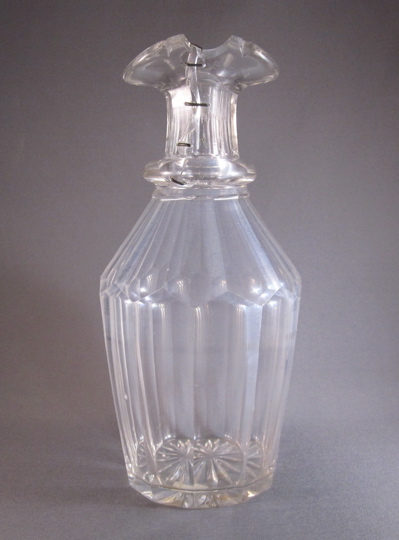



This decanter with similar form has its original stopper but is without staple repairs. Guess which one I prefer?
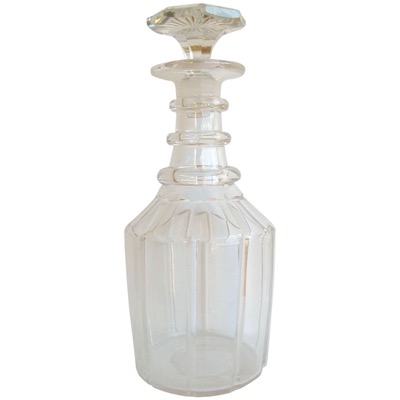
Photo courtesy of 1stdibs
Tags:English, glass, Irish, staples/rivets
Posted in decanter/ewer | 1 Comment »
Sunday, February 28th, 2016
This early 1700s hexagonal porcelain plate was made in China during the Kangxi Period (1662-1722). It has an unglazed hexagonal rim and foot rim, with a cobalt blue underglaze garden design and floral border. It measures 9 inches in diameter.
After the plate took a tumble, it was put back together using three large metal staples, aka rivets, as well as an unusual pewter plug. Unlike the majority of the staple repairs I come across, the holes drilled to accommodate the staples go all the way through to the front, resulting in a nice dot pattern. With strong graphics appearing on the front and back of the plate, I deliberately display both sides.
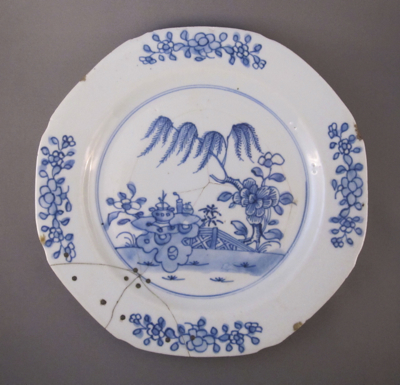
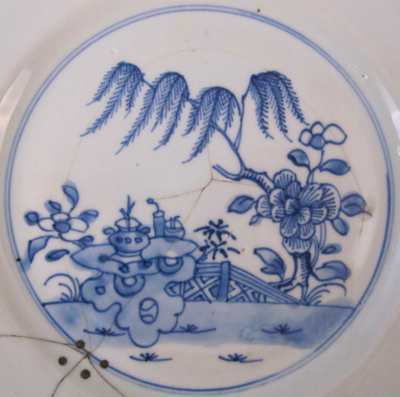
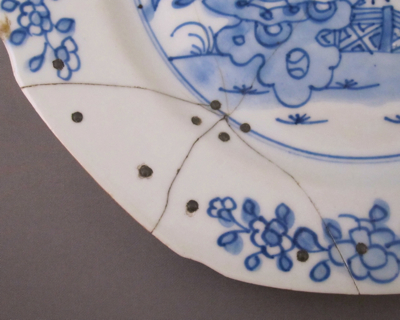
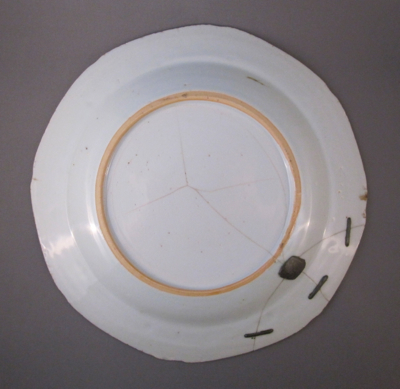


Tags:blue & white, Chinese, porcelain, staples/rivets
Posted in plate/platter | 1 Comment »
Saturday, October 31st, 2015
This Chinese porcelain cup is decorated in cobalt blue with a Peerless Hero figure, stacked bottles and calligraphy taken from Wu Shuang Pu (Table of Peerless Heroes), a late 17th century book of woodcut prints by Jin Guliang. The cup measures 2-3/4 inches high, with an opening diameter of 3-1/2 inches.
After the cup broke in half, over 100 years ago, it was repaired with pairs of metal staples set in cement. Judging from the flattened lozenge-shaped staples made from repurposed wire, this repair was most likely done in the Middle East where itinerant china menders set up shop directly in the streets. But even with the doubled up staples and binding cement, more than a few staples have jumped ship, leaving just tiny empty holes as a reminder of its time in the china mender’s hands.
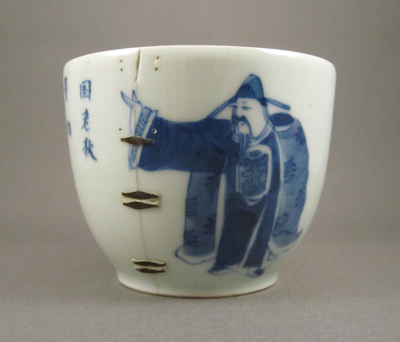
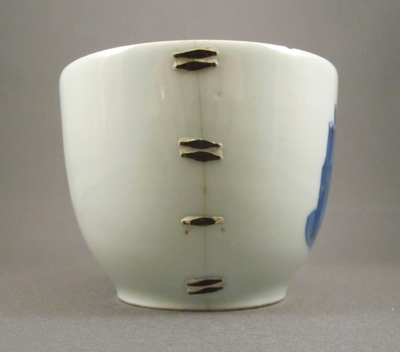
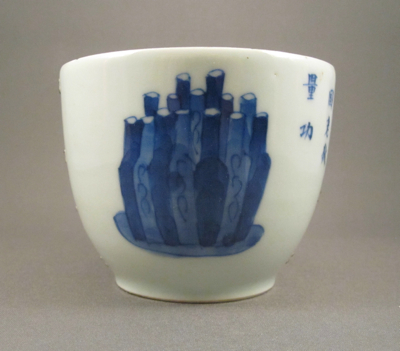

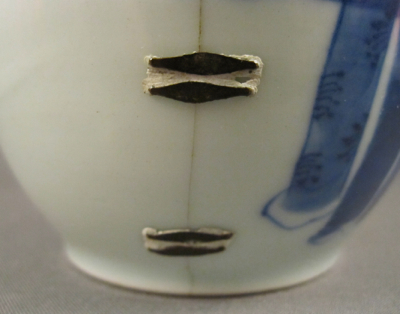

Tags:blue & white, Chinese, porcelain, staples/rivets
Posted in cup/saucer | No Comments »
Sunday, July 5th, 2015
This cup is a mess! It’s a 2.5 inch high Chinese porcelain cup from the Qianlong period (1736-1795) with multi-color enamel decoration in the Mandarin style. Well over 150 years ago when it dropped and shattered into 12 pieces, it was most likely taken to an itinerant “dish mender” who carefully applied 15 metal staples to bring it back to life. A bit of plaster was used to fill in a few gaps left by lost fragments. Past owners really must have cherished this little mug, as it managed to survive many centuries looking like this. As my grandmother would have said, “Oy Vey!”
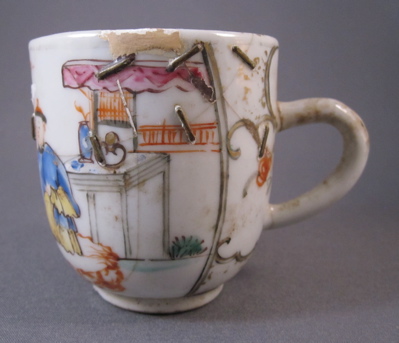
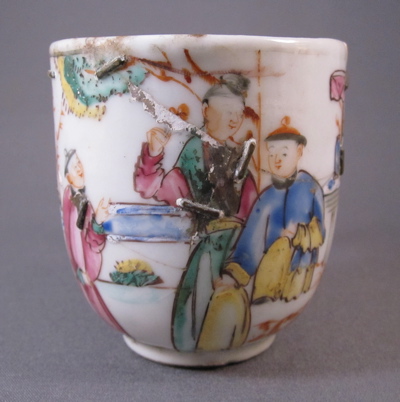
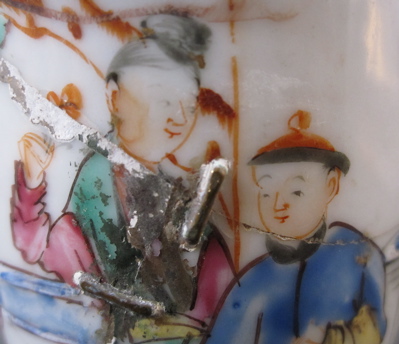
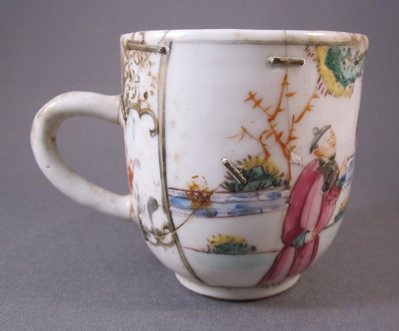

This cup, in much better condition than mine, shows what an intact example looks like.
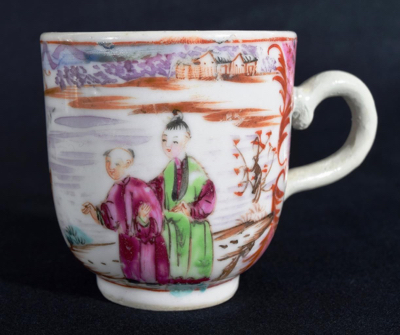
Photo courtesy of eBay
Tags:Chinese, Mandarin, porcelain, staples/rivets
Posted in cup/saucer | No Comments »
Sunday, May 31st, 2015
This 18th century Milch Glass mug with hand painted polychrome hunting scene of a stage pursued by a dog was made in central Europe in the 18th century and measures 6-1/4″ high.
After this mug was dropped, breaking into two pieces, it was most likely taken to an itinerant china mender who repaired it using 16 metal staples of various sizes. It is more common to find ceramics repaired with staples or rivets, but skilled repairers drilled through glass as well.
“Bohemia was also renowned for ‘milch glass’ or milk glass, and tumblers, mugs, bottles and such things made of it were decorated with Watteau scenes and floral designs. The technique is often good, but the shapes are generally clumsy and the decoration insipid.” From The Glass Collector: A Guide to Old English Glass by MacIver Perciva, 1919.
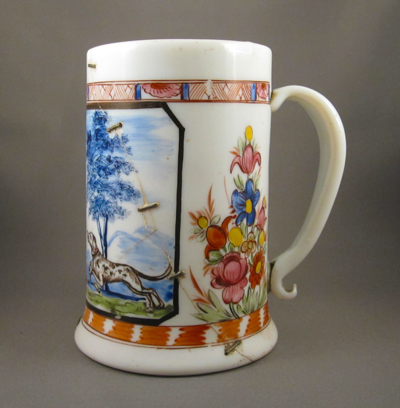
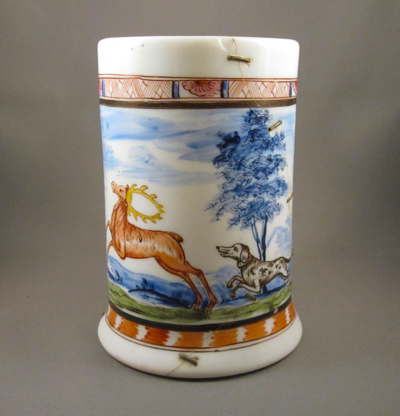
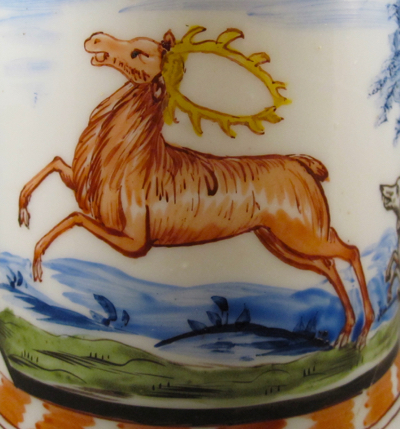
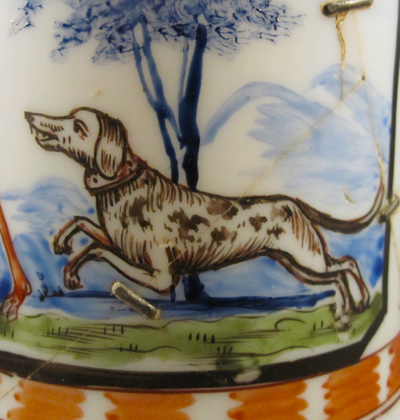

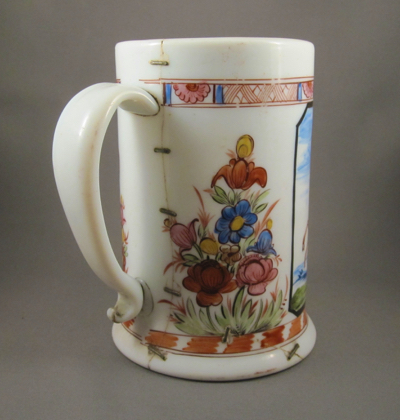
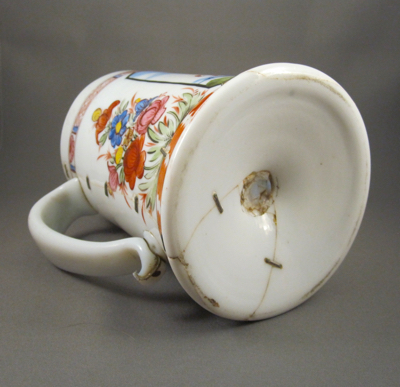
Here’s another example of Milch Glass with similar form and decoration.
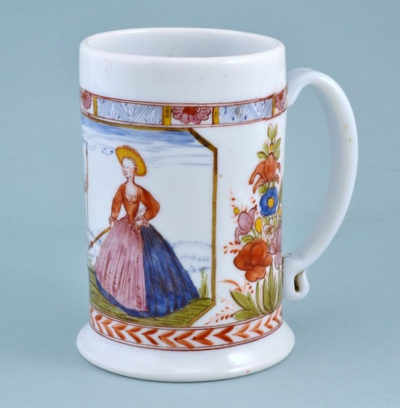
Photo courtesy of Andrew Dando
Tags:German, glass, staples/rivets
Posted in mug/tankard | 2 Comments »
Saturday, May 23rd, 2015
This thrice-repaired Chinese porcelain globular form teapot with Japanese influenced Imari decoration, is painted with a large chrysanthemum motif in underglaze blue, overglaze iron red and gilding, surrounded by stylized scrolling foliage. The bullet shape was inspired by European silver of the same period. It measures 4-1/2″ high and 7-1/2″ wide from handle to spout and dates to around 1720.
After the teapot was dropped over 200 years ago, resulting in a broken handle and spout, it was taken to a skilled silversmith who created this unusual silver zoomorphic replacement spout, added an engraved silver collar and used metal staples to repair the handle. In my opinion, the silver additions transform a perfectly nice teapot into a unique work of art.
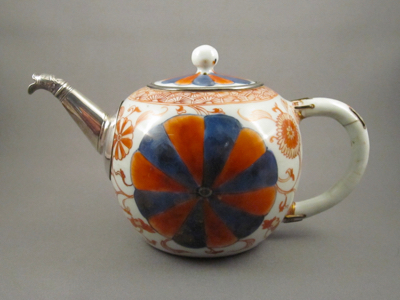
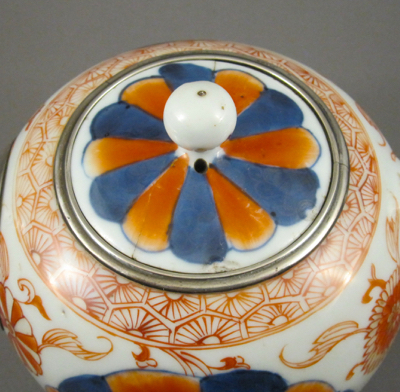
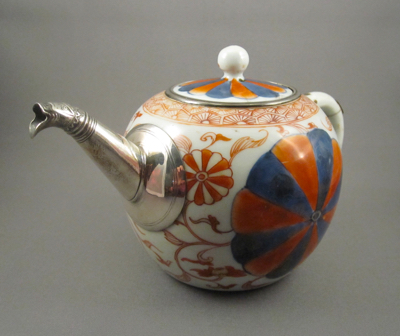

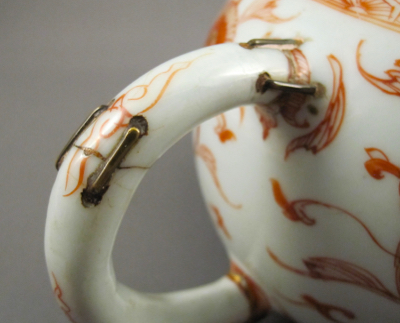
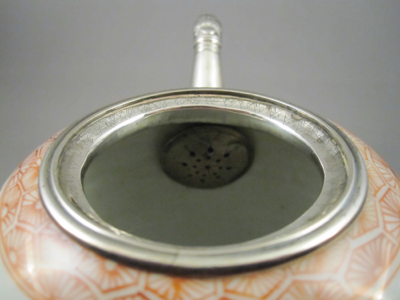
This nearly identical teapot shows what the original spout on mine looked like before it took a tumble.
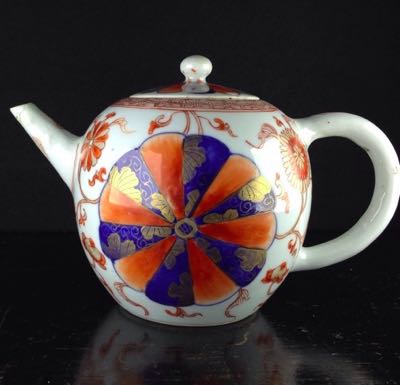
Photo courtesy of Moorabool Antiques
Tags:Chinese, porcelain, silver, staples/rivets
Posted in teapot | 3 Comments »
Wednesday, May 13th, 2015
This small Chinese porcelain “Kangxi revival” jar was made during the latter part of the Qing dynasty (1644-1912), Guangxu period (1875-1908). It is decorated in cobalt blue underglaze with eight figures and stands about 5″ high, with a four character mark on the underside.
At some point during its early life this jar was dropped, resulting in a complex fracture. But rather than tossing the broken pieces out on to the curb, they were taken to a china mender who lovingly restored the jar using metal staples, aka rivets. Judging by the form and the use of double rivets, the repair appears to have been done in the Middle East, where recycled wire was used by itinerant street menders to form flattened rivets.
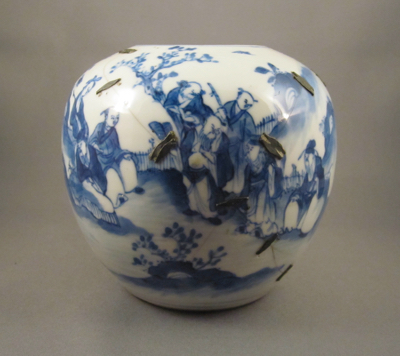
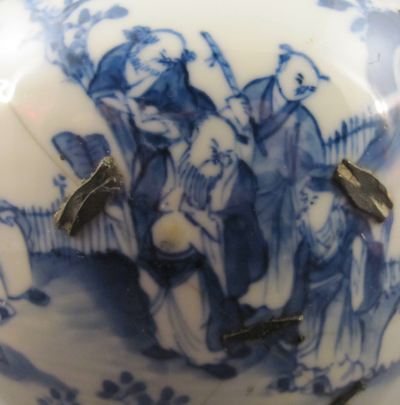


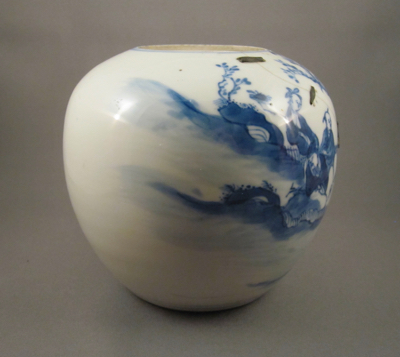
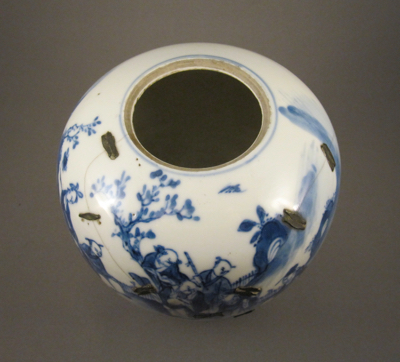
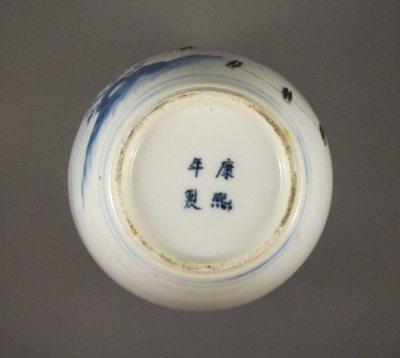
This jar has a similar form and decoration and remains in one piece.
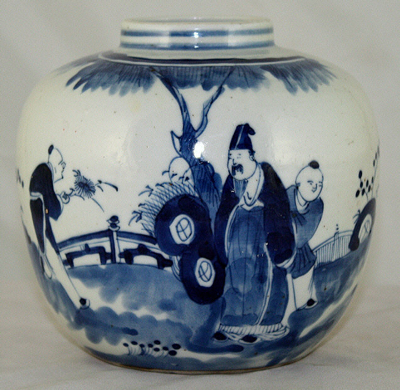
Photo courtesy of Petrie Rogers
Tags:blue & white, Chinese, porcelain, staples/rivets
Posted in pot/jar | 2 Comments »
Sunday, May 3rd, 2015
This unusual hand blown commemorative glass jug with applied handle was made in England around 1840 and stands 6-1/4″ high. It features beautifully engraved images including a frigate in full sail under the Wearmouth Bridge in Sunderland, an oval cartouche with “WH” monogram, an elaborate fruit basket, a spray of wheat, roses and grapes. Examples of Sunderland souvenirs made of glass are more unusual than the popular pottery pieces with colorful transfer decoration, overglaze washes and pink lustre highlights.
The Wearmouth Bridge was completed in 1796 but was still being commemorated well into the middle of the 19th century. When opened it was the longest single span bridge in the world. The original bridge was replaced in 1929 and is still in use today.
It must have taken a skilled hand to stabilize the large horizontal crack using just 5 metal rivets. The underside reveals a ground pontil mark, as well as scratches and wear, showing that this jug has been well used. But it’s remarkable that a fragile glass jug such as this hasn’t sustained even more wear and damage over the past 175 years.
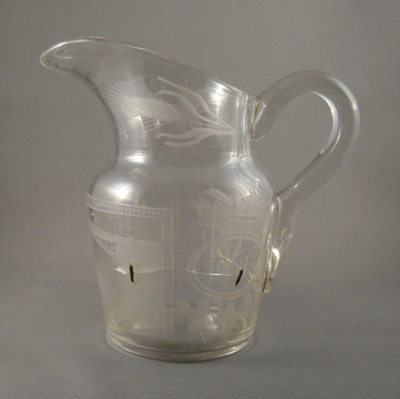
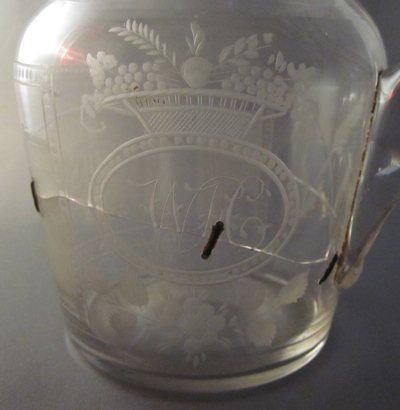
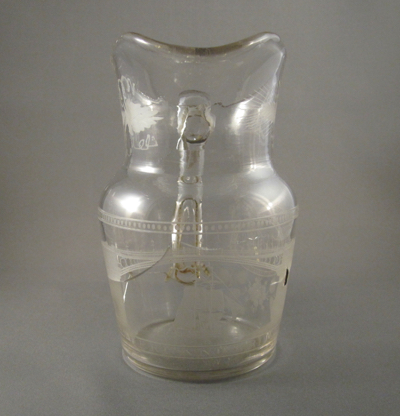

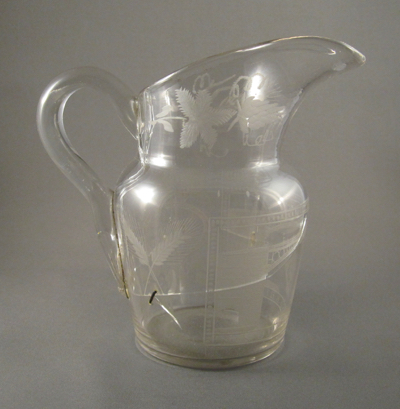


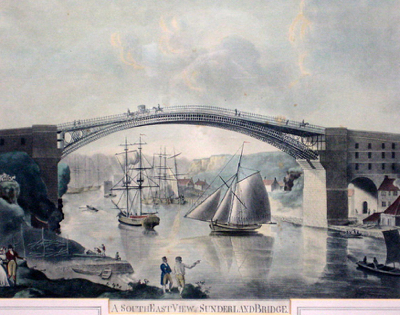
Photo courtesy of The Sunderland Site
Tags:commemorative, English, glass, staples/rivets
Posted in jug | 1 Comment »
Saturday, April 25th, 2015
I am back in London for a brief visit on my way to Ireland and the very first thing I did upon arrival was to head over to see the magnificent ceramics collection at the Victoria & Albert Museum. I could spend an entire day peering into the endless floor to ceiling glass cases filed with worldwide and world-class ceramics. Here are some of my favorite examples of inventive repairs found among the collection.
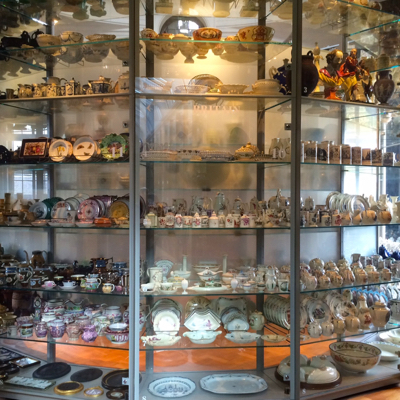
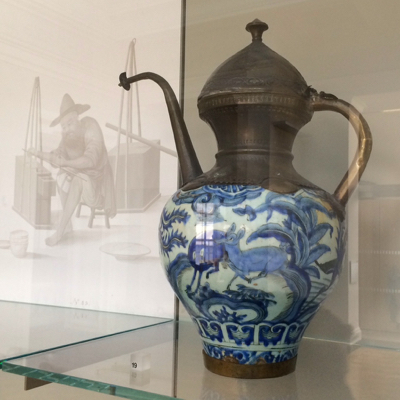
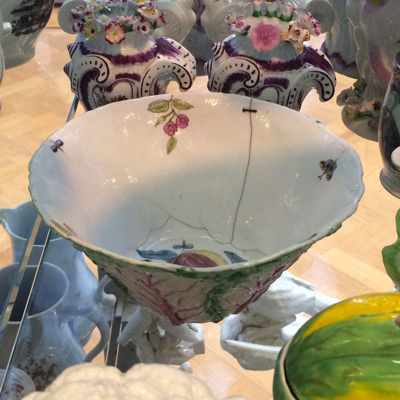
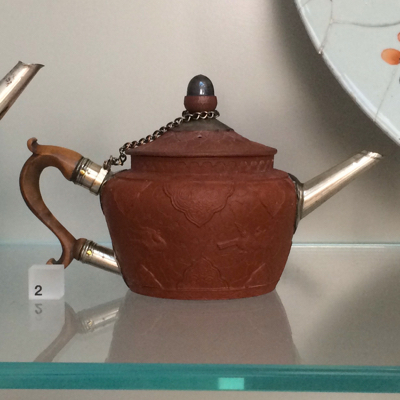
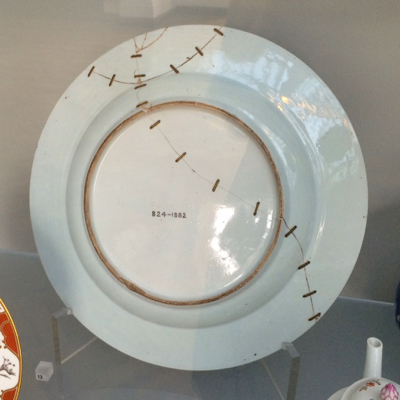


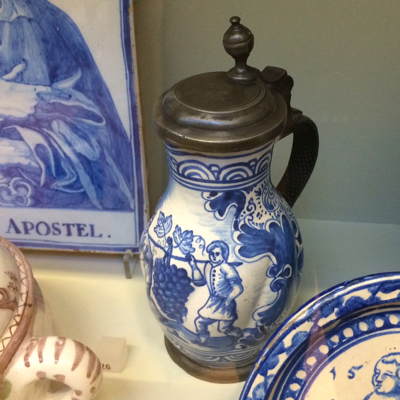
Take a look at this previous post from just over a year ago, showing other examples from the collection.
Tags:blue & white, brass, bronze, Chinese, metal handle, porcelain, pottery, silver, staples/rivets
Posted in anecdotal | No Comments »
Saturday, April 11th, 2015
Earlier this week I took a stroll through one of my favorite spots in Manhattan, The Henry R. Luce Center for the Study of American Art at The Metropolitan Museum of Art. If the Smithsonian Museum is known as “The Nation’s Attic”, then I’d like to christen the Luce Center “The City’s Yard Sale” as it is packed from floor to ceiling with glass showcases filled with over 18,000 tchotchkes, including Tiffany lamps, Shaker boxes and Revere silver. This impressive collection of the museum’s overflow allows the public to research and take a peek into the MET’s closets. If you look closely among the rare Chinese porcelain and early English pottery you will find dozens of pieces in various states of disrepair including visible cracks, chips, worn paint and missing parts.
Here are some of my favorite make-do’s, all hoping to one day escape the confines of the study center’s curio cabinets and be placed alongside their more presentable friends in the “big house.”
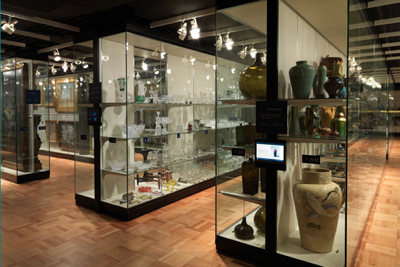



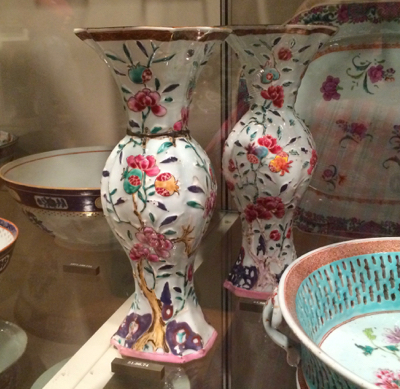
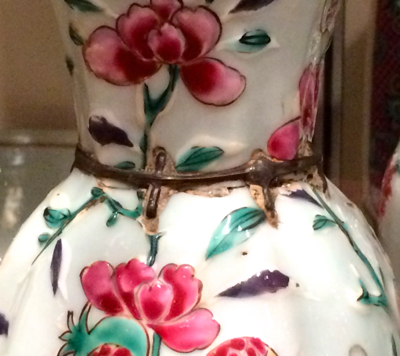


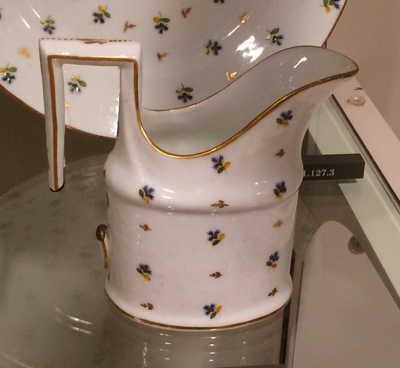


Tags:blue & white, bronze, Chinese, English, glass, metal base, metal handle, porcelain, pottery, staples/rivets
Posted in anecdotal | 2 Comments »








































































